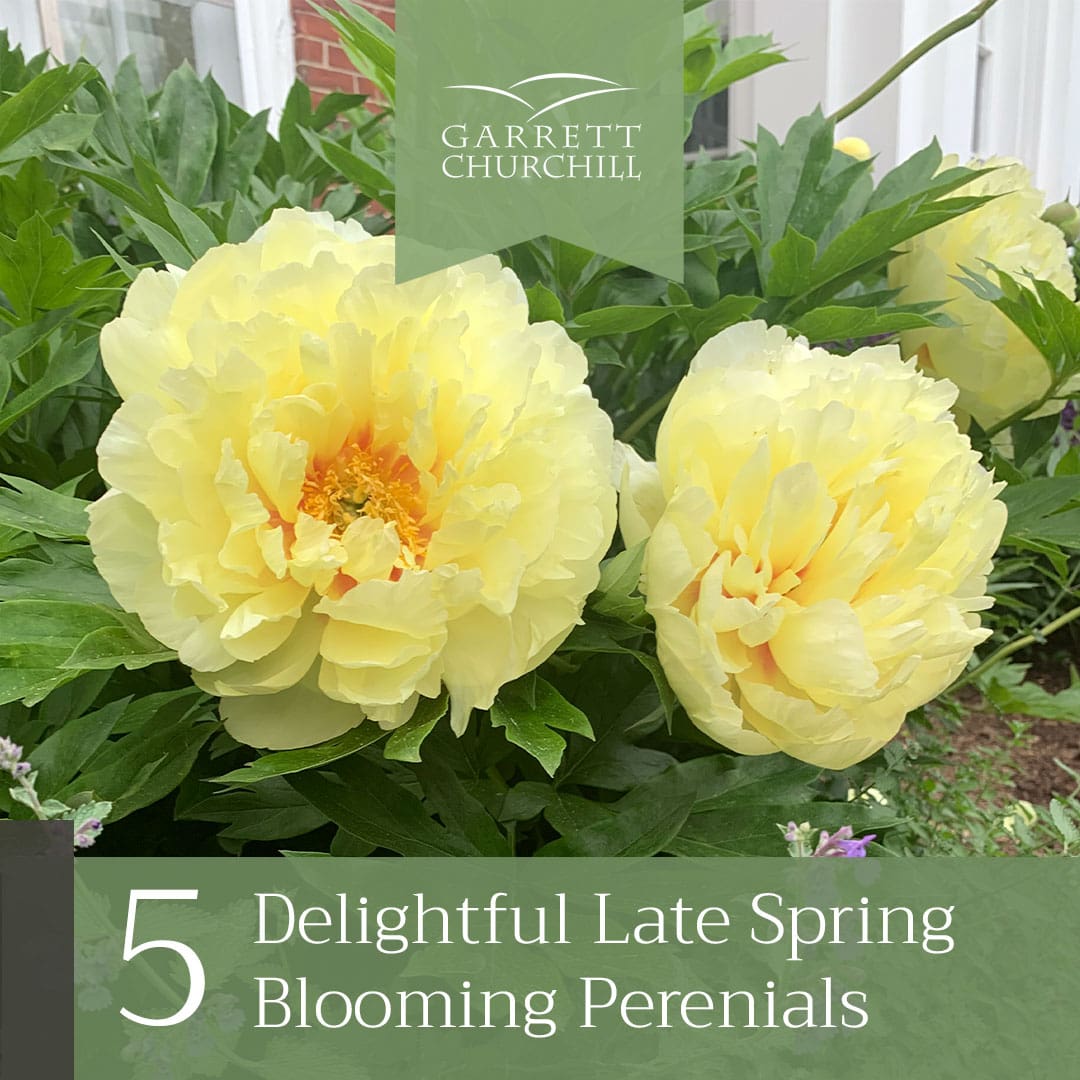Five Delightful Late Spring-Blooming Perennials
Whether you’re an expert plant hobbyist or simply looking to spruce up your outdoor space, gardening is sure to offer a variety of benefits for your mental and physical health—not to mention your landscape’s curb appeal.
Keep reading for some of our favorite late-blooming perennials to keep your garden looking vibrant all summer long!
Perennials vs. Annuals: What’s the Difference?
You don’t have to know much about gardening in order to appreciate a flower in full bloom. That said, it’s important to understand the growing and blooming seasons of the florals you want to incorporate into your garden so you can plan your planting accordingly.
Perennials are flowers that only need to be planted once and can live for several growing seasons, blooming each year.
Annuals, on the other hand, are flowers that need to be re-planted each year as they only live for one growing season.
While perennials live for multiple growing seasons, they tend to have shorter blooming seasons than annuals. Annuals, while only living for one growing season, tend to remain in bloom for a longer period of time.
As a result, many gardeners opt for a combination of the two in order to get the best of both worlds!
Five Late-Blooming Spring Perennials
When it comes to your garden, you have a seemingly endless list of flowers, herbs, and vegetables to choose from. Even when narrowing your selection down to just perennials, you have 100+ options to choose from!
That said, here are a few of our favorite late-spring bloomers to enjoy in the spring and summer:
-
Peony
These garden classics bloom from late spring to early summer and last until the fall, making a great addition to any hedge or walkway lining.
While peonies require relatively little maintenance, be intentional about where they’re initially planted as these perennials don’t do well when moved. Look for a spot with full sun, ideally allowing for 6 to 8 hours of sunlight per day.
While undeniably beautiful, peonies tend to be a bit top heavy with their thick, large blooms—they may need some additional shelter from strong winds, or even stakes to keep them vertical.
Another concern is the foliage may look untidy after the long, hot summer months end. To combat these concerns, plant Itoh Peonies, which are much heartier and rarely require the necessary support of standard peonies.
-
Daylily
With thousands of varieties to choose from, daylilies make a beautiful addition to any garden. They’re low-maintenance, practically pest-free, and can even survive in less-than-ideal conditions—what’s not to love?
That said, their individual flowers come and go frequently, with each lasting only one day. Plant a variety of daylilies ranging from early, mid-season, and late-blooming to have a rotation of flowers in full bloom all season long.
We recommend the Stella D’oro, Happy Returns and Purple D’oro varieties, which bloom on and off throughout much of the summer with some additional deadheading.
Fun fact: contrary to what their name implies, daylilies are not actually part of the lily family.
-
Salvia
Salvas, also known as sage, are colorful, spike-like perennials that bloom from summer to fall. Not only are they great for attracting pollinators such as butterflies and hummingbirds, but they can also act as a natural pest repellant due to their minty aroma.
For best results, plant your salvias in areas with lots of sunlight with well-draining soil. While they can survive in shade, their blooming will be less noteworthy.
We also recommend cutting salvia back after it blooms, as this will produce a second flush of foliage and flowers.
Did you know that you can even propagate your salvia cuttings for a practically endless supply?
-
English Lavender
Lavender isn’t just a pretty plant—it’s well-known for its culinary and medicinal benefits, often used in calming essential oils. Like salvia, spring and summer-blooming perennial is also great for attracting pollinators.
Because lavender is somewhat difficult to grow from seed, we recommend purchasing a nursery plant to transplant into your garden. Plant your lavender in an area with lots of sun and well-draining soil for best results.
After harvesting your lavender, try drying it to make great-smelling lavender sachets.
-
Bee Balm
Bee balm, as its name implies, is a wonderful addition to any pollinator-friendly garden. Native to North America, this vibrant flower blooms in mid-to-late summer.
For the best blooms, plant your bee balm in an area with full sun and healthy, well-draining soil. Choose a spot with good air circulation too, as this plant is prone to mildew.
Because bee balm is part of the mint family, this aromatic plant can be used in herbal teas or salads, or as a garnish. Be mindful of placement; however, bee balm can quickly spread—just like mint.
Grow Your Dream Garden With Us
Here at Garrett Churchill, our expert landscapers have 22+ years of experience bringing landscape and garden designs to life.
Our start-to-finish landscaping process includes an on-site consultation plus soil analysis, custom project design, design review and analysis, all-inclusive installation, and spotless cleanup.
Visit http://garrettchurchill.local/planting to learn more about the ways we can help you transform your garden.
